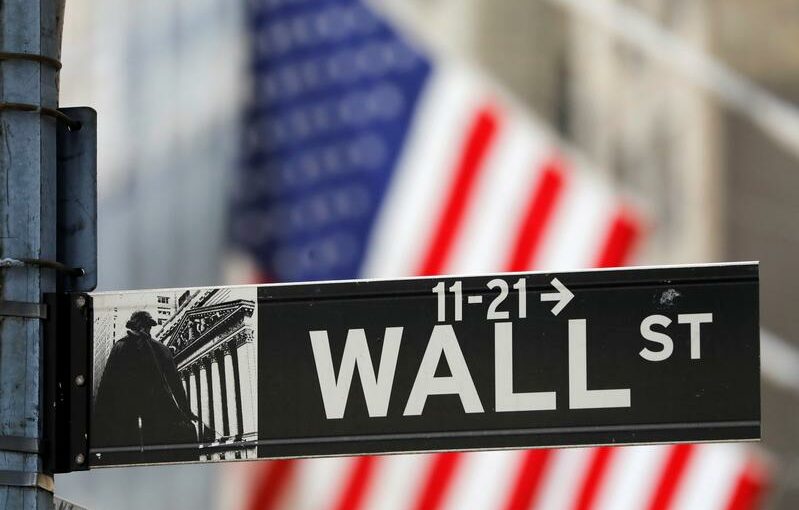NEW YORK (Reuters) – Wall Street made a comeback on Tuesday with all the major indexes rising, and yields on other safe havens including U.S. Treasuries bounced off lows even as worries remained about a resurgence in COVID-19, spurred by the Delta variant.
Wall Street’s main indexes all rose by more than 1%, with the Dow recovering from its worst day in nine months. Yields on U.S. 10-year Treasuries came off a new five-month low, reversing a 10 basis-point drop from the previous session, the biggest since February.
“The bond market has valid concerns. But, even with the moderated outlook, it still leaves a lot of room for equities,” said Jack Ablin, founding partner and chief investment officer at Cresset Capital Management. “The bond market isn’t calling for a recession, but perhaps a tamping down of growth expectations. We still believe equity risk-taking is still intact.”
By mid-afternoon, the Dow Jones Industrial Average rose 619 points, or 1.82%, to 34,581.04, the S&P 500 gained 71.67 points, or 1.68%, to 4,330.16 and the Nasdaq Composite added 246.16 points, or 1.72%, to 14,521.14.
MSCI’s gauge of stocks across the globe gained 0.98%.
“The narrative from yesterday that bled through the weekend was a little bit of a risk-off scenario around the increasing COVID cases,” said Charlie Ripley, senior investment strategist for Allianz Investment Management. “I don’t think it’s so much that investors are worried about the cases themselves. It’s government officials and their reaction, where we could get into a situation where restrictive measures get put in place again, that dampens growth over the long run.”
After their worst sell-off this year on Monday, Europe’s STOXX 600 added 0.2%, down from highs earlier in the session due to positive corporate earnings and production updates from miners.
In a separate gauge of investor risk appetite, bitcoin fell below $30,000 for the first time since June 22.
Riskier assets globally have come under pressure recently as many countries struggle to contain the outbreak of the fast-spreading Delta virus variant, raising fears that further lockdowns and other restrictions could upend the worldwide economic recovery.
A fully vaccinated senior aide to U.S. House of Representatives Speaker Nancy Pelosi tested positive for COVID-19, Pelosi aide Drew Hammill said on Tuesday.
The Delta variant is the cause of more than 80% of the new COVID-19 cases in the United States, but the authorized vaccines in the country are still more than 90% effective in preventing hospitalizations and deaths, top U.S. infectious disease expert Anthony Fauci said during a U.S. Senate hearing.
In a sign of lingering fears of the spread of the Delta variant, the Aussie dollar/Swiss franc cross, a favorite proxy in currency markets for economic recovery bets, fell to its lowest level since December 2020 at 0.6714 francs, according to Refinitiv data.
The U.S. dollar rose to a three-month peak on Tuesday as investors continued to flee to safety.
The gains in the dollar come as yield differentials have moved against it.
By mid-morning, the dollar index, a measure of its value against six major currencies, rose 0.2%, after hitting the three-month high earlier in the session.
Graphic: Dividend yield vs bond yield:
In Europe, Germany’s 10-year yield, the benchmark for the euro zone, briefly fell to -0.427%, breaching a new lowest level since February.
Oil prices turned positive as investors looked to buy a dip.
U.S. crude recently rose 1.78% to $67.60 per barrel and Brent was at $69.55, up 1.36% on the day. Spot gold dropped 0.2% to $1,809.62 an ounce.
Source: Read Full Article
